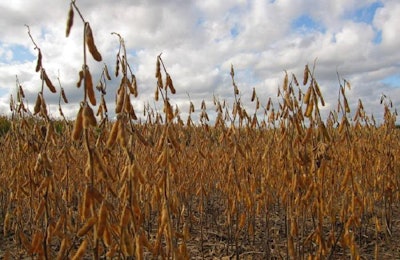
US-China trade war, weather and other factors will likely crown Brazil the world’s largest soybean producer this year
Another year of record-breaking crop acreage suggests Brazil will likely overtake the U.S. as the world’s largest producer of soybeans this year.
“Market exuberance” about rising soybeans in recent months led the U.S. Department of Agriculture (USDA) to bump up Brazil’s forecasted 2019-20 soybean production. The USDA’s late December report anticipated that Brazilian farmers will plant 36.8 million hectares (90.9 million acres) of soybeans this year, with the potential to harvest a record 123.5 million metric tons. Brazil’s previous record was 122 million metric tons, according to the USDA.
Meanwhile, U.S. production is expected to fall nearly 20% to less than 100 million metric tons, enabling Brazil to take the lead as the world’s largest producer of soybeans after several years of back and forth with the U.S.
“Brazil first overtook the U.S. in production of soybeans back in 2017-18,” said Daniel Redo, director of agricultural research at Refinitiv. “The following season, the U.S. took back the crown. In both seasons, the margin was very narrow. 2019-20 will likely be a very different story.”
While the U.S.-China trade war pushed Chinese producers to seek cheaper wares elsewhere, American farmers also struggled with poor growing conditions, Redo said, leading to the smallest soybean U.S. soybean crop in eight years.
Meanwhile, according to the USDA, the Brazilian real weakened against the dollar, further adding to the desirability of Brazilian soy.
In fact, the USDA believes Brazilian farmers would have planted even more soybeans, were it not for concerns about decreased demand for soy due to the African swine fever outbreak.
Uncertainty remains
There remains some uncertainty about the Brazilian soy harvest. Brazil began the 2019-20 with severely dry conditions, which in turn caused farmers there to delay planting by several weeks. Sporadic rains in October and November may mean some producers in the north and northeast of Brazil will have to replant their soybeans, or else opt to plant corn instead. Talk of a potential accord between the U.S. and China could further erode Brazil’s tenuous dominance.
However, Redo said he thought it would be unlikely that U.S. farmers could overtake their Bazilian counterparts in the near future.
“Severe drought-like yields would be needed to have production approach totals reached in the U.S. this season,” he said. “Anything is still possible, but right now, there’s little evidence to suggest such a scenario.”
In the long run, he said, the ongoing expansion of Brazil’s market share will likely spur additional agricultural growth in Brazil, particularly as producers there begin to invest more aggressively in yield-improving technologies.
“Given current commodity prices, South American crop production outlooks and trade war-induced market uncertainty,” Redo said, “it seems likely that U.S. farmers will also favor corn when deciding what to sow in 2020, further ceding ground to South American producers next season.”









